Intellectual property (IP) is a critical asset in today’s innovation-driven economy. Effective management of IP not only safeguards innovations but also enhances competitive advantage. This article explores various dimensions of intellectual property management, from understanding its fundamentals to leveraging technology and its implications for businesses.
Understanding Intellectual Property
Intellectual property refers to the legal rights that owners have over their creations and inventions. It encompasses various forms of intangible assets that can be owned and traded. Understanding these rights is essential for protecting innovation and ensuring a fair competitive landscape.
Definition and Importance of Intellectual Property
The term “intellectual property” involves several concepts, including copyrights, trademarks, patents, and trade secrets. Each type guards against unauthorized use, allowing creators to capitalize on their inventions. The importance of IP lies not only in protecting rights but also in fostering innovation, enhancing reputation, and facilitating collaborations.
Furthermore, strong IP protection incentivizes research and development, which is crucial for economic growth. By safeguarding original works, individuals and organizations are empowered to invest more confidently in new ideas and technologies, knowing their creations are legally protected. This environment of security encourages a culture of creativity, where inventors and artists are motivated to push boundaries and explore new frontiers, ultimately benefiting society as a whole.
Types of Intellectual Property
- Patents: These protect inventions and processes for a specific period, typically twenty years, preventing others from using or selling the invention without permission.
- Copyrights: This secures the rights to artistic works, literature, and other creative outputs, allowing authors to control reproduction and distribution.
- Trademarks: These distinguish the goods or services of one enterprise from those of others, providing brand recognition and protecting goodwill.
- Trade Secrets: Information that gives a business a competitive edge and is not generally known or readily accessible, such as formulas or processes.
Each category of intellectual property serves unique purposes and has distinct implications for management strategies. Understanding these differences allows stakeholders to tailor their approaches to maximize effectiveness. For instance, businesses may choose to patent their innovative technologies while simultaneously using trademarks to build a strong brand identity. This dual approach not only protects their inventions but also enhances their market presence, creating a robust framework for long-term success.
Moreover, the global landscape of intellectual property is continually evolving, influenced by advancements in technology and changes in consumer behavior. As digital platforms expand, issues surrounding copyright infringement and trademark dilution have become increasingly prevalent. Companies must stay vigilant and adapt their strategies to navigate these challenges effectively, ensuring their intellectual property remains safeguarded in an ever-changing environment. This adaptability is vital for maintaining competitive advantages and fostering sustainable growth in today’s fast-paced market.
Strategies for Intellectual Property Management
Managing intellectual property effectively demands both proactive and reactive strategies. These include identifying, protecting, and leveraging IP assets, ensuring that organizations can navigate the complexities of IP management efficiently.
Identifying Your Intellectual Property
The first step in any effective IP management strategy is accurately identifying what types of intellectual property an organization holds. This includes conducting a thorough inventory of patents, copyrights, trademarks, and trade secrets. Regular audits can help in recognizing new IP as it is developed.
Engaging employees across departments—especially R&D, marketing, and legal—can promote a culture of awareness regarding the types of intellectual property being created. Creating a collaborative environment fosters innovation while ensuring that valuable ideas and creations are documented and protected early on. Furthermore, implementing training sessions can enhance employees’ understanding of IP rights and responsibilities, empowering them to contribute to the organization’s IP strategy actively.
Protecting Your Intellectual Property
Once identified, the next step is to put measures in place to protect intellectual property. This includes filing for patents, registering trademarks, and establishing copyrights as necessary. Each method varies in cost, complexity, and longevity, making an informed approach essential.
Additionally, establishing nondisclosure agreements (NDAs) for employees and collaborators helps in safeguarding trade secrets. Organizations must also consider international protection if they plan to operate globally, as IP laws can vary significantly from one country to another. To further enhance protection, companies may also explore the use of digital rights management (DRM) technologies, which can help control the distribution and usage of copyrighted materials in the digital realm.
Periodic reviews of existing IP protections are also vital. As trends and technologies evolve, so too must the strategies for IP management, ensuring ongoing compliance and protection. This proactive approach not only mitigates risks associated with potential infringements but also allows organizations to adapt their strategies in response to emerging threats, such as cyber-attacks or shifts in market dynamics. By staying ahead of these challenges, businesses can maintain a competitive edge while fostering a culture of innovation and respect for intellectual property rights.
Legal Aspects of Intellectual Property Management
Understanding the legal framework surrounding intellectual property is crucial for effective management. This encompasses a variety of laws and regulations designed to protect the rights of innovators and creators. Intellectual property (IP) serves as a cornerstone for fostering creativity and innovation, allowing individuals and businesses to reap the benefits of their inventions and artistic works. As such, a robust understanding of IP management is not only beneficial but essential for sustaining competitive advantage in today’s fast-paced market.
Intellectual Property Laws and Regulations
Intellectual property laws vary by country and can include international treaties, such as the Berne Convention for copyright and the Patent Cooperation Treaty (PCT). Navigating this landscape requires organizations to work closely with legal experts who specialize in IP law. In addition to these treaties, many countries have specific laws regarding trademarks, copyrights, and patents, which can create a complex web of compliance requirements. Organizations must also be aware of the differences in enforcement mechanisms and the potential for varying interpretations of IP rights across jurisdictions.
Staying compliant with local regulations is equally important to avoid legal disputes and potential loss of intellectual property rights. Training employees on IP policies can further shield organizations from potential pitfalls. Moreover, organizations should consider implementing regular audits of their IP assets to ensure that all protections are up to date and that no infringements have occurred. This proactive approach not only safeguards their innovations but also fosters a culture of respect for intellectual property within the organization.
Legal Consequences of Mismanagement
Mismanagement of intellectual property can lead to severe legal ramifications. Organizations may face costly litigation, loss of exclusive rights, and reputational harm. Misuse or accidental disclosure of trade secrets can result in irreversible damage, harming competitive advantage and market positioning. The financial implications of such mismanagement can be staggering; companies may incur legal fees, settlements, and damages that can significantly impact their bottom line.
A thorough understanding of relevant laws and proactive measures must be a priority for any organization to mitigate these risks. Establishing an IP compliance program and seeking regular legal counsel can help organizations stay ahead of potential pitfalls. Additionally, fostering an environment that encourages innovation while respecting IP rights can lead to a more sustainable business model. By integrating IP management into the overall strategic planning process, organizations can better align their creative efforts with legal protections, ensuring that their intellectual assets are not only safeguarded but also leveraged for maximum impact in the marketplace.
Role of Technology in Intellectual Property Management
In an increasingly digital world, technology plays an essential role in managing intellectual property. From digital tools for filing and tracking IP to cutting-edge solutions like artificial intelligence (AI) and blockchain, technological advancements can enhance efficiency and effectiveness.
Digital Tools for Intellectual Property Management
Various digital platforms have emerged to simplify IP management processes. These include online databases for research and filing, project management tools for tracking IP development, and analytic software to assess the market landscape. The integration of cloud-based solutions allows teams to collaborate seamlessly across different geographical locations, ensuring that all stakeholders have real-time access to critical information. This not only accelerates the decision-making process but also fosters a culture of transparency and communication within organizations.
Automation tools can also streamline administrative tasks associated with IP management, allowing organizations to focus on strategic innovation rather than getting bogged down by paperwork. Implementing these technologies can lead to improved accuracy and reduced overheads. Moreover, the use of machine learning algorithms can provide insights into historical data, helping organizations to identify patterns and optimize their IP strategies. As businesses increasingly recognize the value of their intellectual assets, leveraging these digital tools becomes crucial for maintaining a competitive edge in the market.
The Impact of AI and Blockchain on Intellectual Property
AI is transforming how organizations manage their intellectual property by offering advanced analytics, automation, and decision-making tools. AI can help in assessing the uniqueness of inventions, predicting trends in IP disputes, and automating filing processes. For instance, AI-driven patent search tools can analyze vast databases to quickly identify prior art, significantly reducing the time spent on research and increasing the likelihood of successful patent applications. This capability not only enhances the efficiency of the IP management process but also empowers inventors and businesses to make informed decisions based on comprehensive data analysis.
On the other hand, blockchain technology is proving valuable for creating transparent, immutable records of IP rights, making it easier to manage ownership and royalties. By utilizing smart contracts, organizations can automate royalty payments and ensure that creators are compensated fairly and promptly. As these technologies continue to evolve, their implications for IP management will likely grow increasingly significant. The combination of AI and blockchain could lead to a future where IP rights are not only easier to manage but also more secure, fostering an environment that encourages innovation and protects the rights of creators in an ever-changing digital landscape.

Intellectual Property Management for Businesses
The approach organizations take to IP management often depends on their size and market position. Both startups and large corporations face unique challenges and opportunities when it comes to leveraging intellectual property.
Intellectual Property in Startups and SMEs
For startups and small to medium enterprises (SMEs), effective IP management is crucial for survival and growth. These entities often rely heavily on innovation to differentiate themselves in competitive markets, making IP a valuable asset.
Startups should prioritize establishing robust IP protection policies from the outset, as they often attract attention from larger companies looking to acquire or replicate successful innovations. Conducting thorough due diligence is key to identifying potential IP risks early in the startup’s lifecycle.
Intellectual Property in Large Corporations
Large corporations typically have dedicated legal teams or departments specializing in IP management. Their approach often involves comprehensive strategies that include global IP portfolios and collaboration with other entities.
These companies benefit from economies of scale, allowing them to invest substantially in research and development while managing the risks associated with IP mismanagement. However, they must remain agile and innovative to protect and capitalize on their extensive IP assets effectively.
Conclusion
Effective intellectual property management is pivotal in a knowledge-based economy. By understanding the definitions, types, legal frameworks, and technological influences on IP, organizations can lay the groundwork for strategic management. Proactive identification and protection of intellectual property are essential for companies of all sizes to thrive. In an era where innovation is vital, investing in comprehensive IP management strategies will yield significant returns and foster sustainable growth.
Computer Packages Inc. (CPI) is a privately owned IP management company with over fifty years of experience serving the IP community. Our mission is to be the most trusted partner in safeguarding clients’ IP assets with innovative IP management software and annuity services. Learn how we specialize in IP patent, trademark, and annuity management on our Products & Services page.


